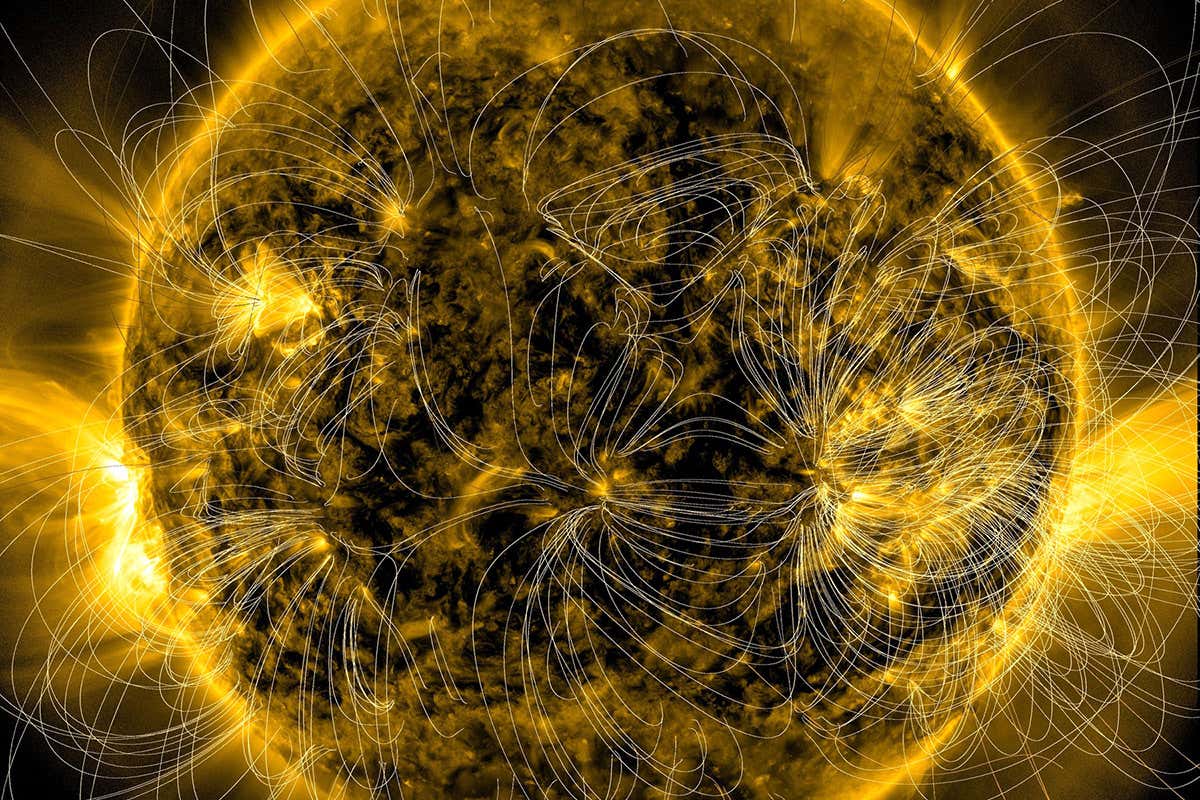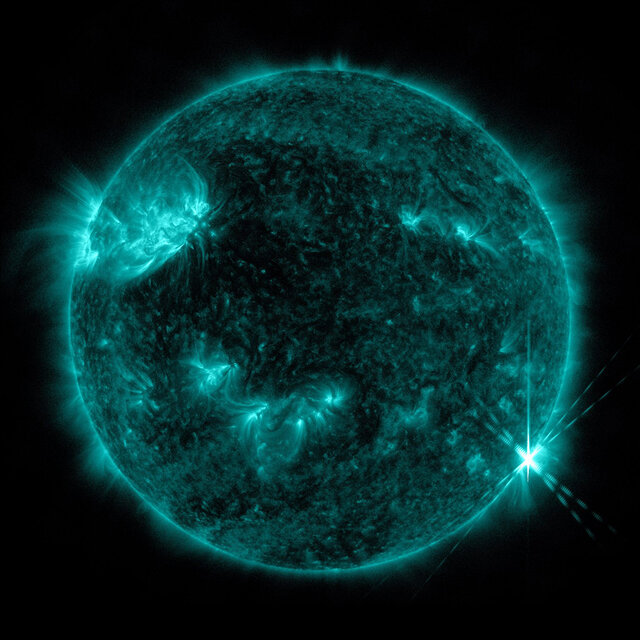Solar flares are a natural phenomenon that occurs when sudden bursts of radiation from the sun are released into space. These flares can have a significant impact on our daily lives, from disrupting satellite communications to causing power outages on Earth. One of the key factors that influence the occurrence and intensity of solar flares is the magnetic field of the sun. In this article, we will explore what solar flare magnetic fields are, how they work, and their implications for our planet.
What are Solar Flare Magnetic Fields?

Solar flare magnetic fields are the magnetic fields that surround and interact with the plasma on the sun’s surface. The sun is essentially a giant ball of plasma, which is made up of highly charged particles like electrons and protons. These particles are constantly moving and generating magnetic fields, which in turn affect the behavior of the plasma.
How do Solar Flare Magnetic Fields Work?

Solar flare magnetic fields work by creating loops of plasma on the sun’s surface. As the magnetic field lines twist and contort, they can become unstable and release large amounts of energy in the form of a solar flare. This process is known as magnetic reconnection and is responsible for some of the most powerful solar flares observed.
When Do Solar Flare Magnetic Fields Occur?

Solar flare magnetic fields occur whenever there are strong magnetic fields present on the sun’s surface. These magnetic fields are often associated with sunspots, dark regions on the sun’s surface where the magnetic field is particularly intense. Sunspot activity follows an 11-year cycle, with periods of high activity (known as solar maximum) followed by periods of low activity (solar minimum).
Who Studies Solar Flare Magnetic Fields?

Solar flare magnetic fields are studied by scientists in a variety of fields, including astronomy, astrophysics, and space weather. These researchers use a combination of ground-based and space-based instruments to observe the sun’s magnetic field and the associated plasma.
Pros and Cons of Solar Flare Magnetic Fields
Pros
- Solar flare magnetic fields can provide valuable insights into the workings of the sun and other stars.
- Understanding solar flare magnetic fields is essential for predicting and mitigating the effects of space weather on Earth.
- Solar flares caused by magnetic fields can be visually stunning, providing a unique opportunity to observe the sun’s activity.
Cons
- Solar flares caused by magnetic fields can have serious consequences for our planet, including power outages, disrupted satellite communications, and damage to electrical infrastructure.
- The unpredictability of solar flares makes it challenging to prepare for their potential effects.
- Studying solar flare magnetic fields requires sophisticated equipment and expertise, which can be costly and difficult to obtain.
Alternatives to Solar Flare Magnetic Fields
There are no direct alternatives to studying solar flare magnetic fields since they play a critical role in the occurrence and intensity of solar flares. However, there are alternative methods for studying the impact of solar flares on our planet, such as monitoring the ionosphere or studying the effects of cosmic rays.
Step-by-Step Guide to Studying Solar Flare Magnetic Fields
- Obtain specialized equipment designed for observing the sun’s magnetic field, such as magnetographs or helioseismographs.
- Analyze the data collected by these instruments to identify patterns and changes in the magnetic field over time.
- Use computer simulations and models to better understand the behavior of solar flare magnetic fields and predict their effects on Earth.
- Collaborate with other researchers in the field to share data and findings, and work towards a better understanding of solar flare magnetic fields.
Tips for Studying Solar Flare Magnetic Fields
- Stay up-to-date with the latest research and developments in the field.
- Attend conferences and workshops to learn from other experts in the field.
- Work collaboratively with other researchers to share data and insights.
- Stay focused on the big picture, and remember that understanding solar flare magnetic fields is essential for predicting and mitigating the effects of space weather on Earth.
Comparing Solar Flare Magnetic Fields
Solar flare magnetic fields can vary in strength and complexity, depending on a variety of factors, including the sunspot cycle and the location on the sun’s surface. Comparing different solar flare magnetic fields can provide valuable insights into the workings of the sun and help predict the potential impact of solar flares on our planet.
The Best Tools for Studying Solar Flare Magnetic Fields
There are several specialized tools and instruments used for studying solar flare magnetic fields, including:
- Magnetographs – these instruments measure the strength and direction of the magnetic field on the sun’s surface.
- Helioseismographs – these instruments detect and record the seismic waves generated by the movement of plasma on the sun’s surface.
- Computer simulations and models – these tools are essential for predicting the behavior of solar flaremagnetic fields and their potential impact on Earth.
FAQs
- Can solar flare magnetic fields cause power outages on Earth?
- Yes, solar flares caused by magnetic fields can disrupt electrical infrastructure on Earth and cause power outages.
- How often do solar flares occur?
- Solar flares follow an 11-year cycle, with periods of high activity (known as solar maximum) followed by periods of low activity (solar minimum).
- What is the biggest solar flare ever recorded?
- The biggest solar flare ever recorded occurred in September 1859 and is known as the Carrington Event. It was so powerful that it caused auroras to be visible as far south as Cuba and Hawaii.
- How do scientists monitor solar flares?
- Scientists monitor solar flares using a variety of ground-based and space-based instruments, including telescopes, magnetographs, and helioseismographs.
- What are some potential consequences of a major solar flare hitting Earth?
- Some potential consequences of a major solar flare hitting Earth include power outages, disrupted satellite communications, and damage to electrical infrastructure.
Conclusion
Solar flare magnetic fields are a critical component of our understanding of space weather and how it affects our planet. While they can have both positive and negative impacts, studying them is essential for predicting and mitigating their effects. By staying up-to-date with the latest research and collaborating with other experts in the field, we can continue to improve our understanding of solar flare magnetic fields and their implications for our planet.


